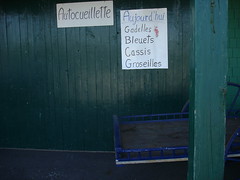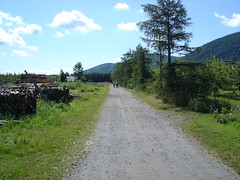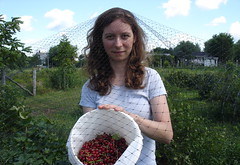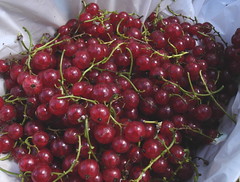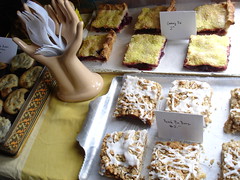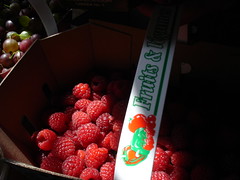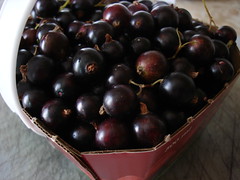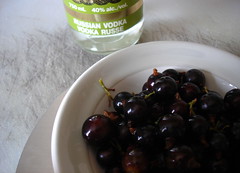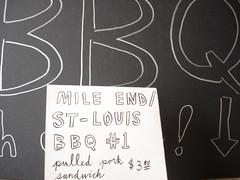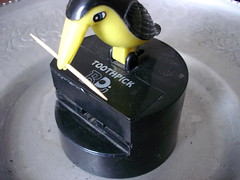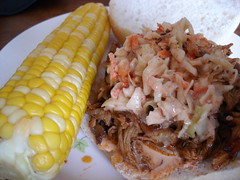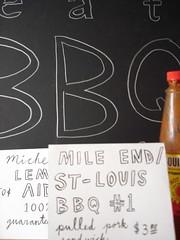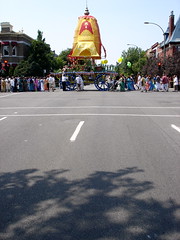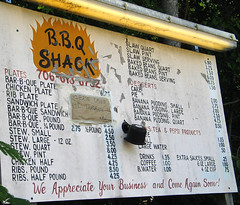Return of the S.C.C.
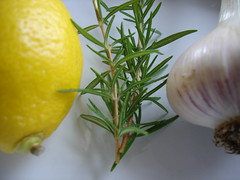
Yes, it'd been a while since we’d held a Sunday Chicken Club gathering, though probably not as long as you might think. Originally, we’d envisioned a monthly event, but that was back in the era of the clubs. Back when clubs of all kinds were in the air around here—book clubs, debating clubs, supper clubs, math clubs, knitting clubs, rockumentary appreciation clubs, Latin clubs, etc., most of them ill-fated. A bit like Michelle’s knitting club, the Chicken Club hadn’t completely disappeared but it had quickly become a sporadic affair. This last one, however, was a resounding success, and the star attraction, not surprisingly, I guess, was a roast chicken. It was based on a recipe from the Chez Panisse Café Cookbook, and I think it was hands-down the very best chicken either of us had ever made, and one of the very best either of us had ever tasted (Zuni Café-caliber). “A good roast chicken is the best dinner of all,” Alice Waters writes in the preamble to her recipe, and although I’m not sure I would agree with that statement 100% of the time, on this occasion there’s no question that she was right. Easy to prepare and absolutely succulent--juicy, with a crispy skin and a beautifully summery flavor thanks to the lemon, rosemary, and garlic--it was the perfect dinner party centerpiece.
Originally we'd been thinking Italian for this meal, but then we realized that the last time we'd had people over for chicken it had been for Pollo al Mattone, so when we came across the Chez Panisse Café recipe we just shifted our focus just a little and went mostly Californian instead. We wanted a well-composed menu, but we wanted the meal to be high on the manageability scale, too. This was a Sunday dinner after all--the idea is to relax, to share a leisurely meal and enjoy your company. We also wanted to make use of some of our goodies from the garden, especially our green beans and our lettuce, both of which have been growing way beyond our capacity to keep up with them. Keeping with our California theme, I thought of a tried and true favorite: a grilled potato salad with green beans and lettuce we'd found in Annie Somerville's Fields of Greens a few years back. Not only does this combo make for a handsome salad, but the addition of roasted-then-grilled potatoes is quite simply a stroke of genius, adding a wonderful smoky goodness to the mix and elevating this potato salad to heights that'll have your guests loving you forever. When it came to dessert, we wanted to stay seasonal. Those of you who've been reading of late will know that we've been knee-deep in berries; what you might not know is that we've also been taking advantage of this year's fabulous figs (as cheap as a case of 24 for $6.00 (!), and all of them perfect (!!)) like they were going out of style. Once again, the Chez Panisse Café Cookbook came through for us. This is the menu we settled on:
fresh bufala mozzarella with tomatoes
grilled new potato salad with cherry tomatoes, summer beans, and basil
roast chicken
cheese course
baked figs with raspberries
FIN
Roast Chicken, Chez Panisse Café-style
1 roasting chicken, about 3 1/2 lbs
1 tbsp sea salt
1/2 tsp freshly cracked black pepper
2 sprigs rosemary
2 cloves garlic
1/2 lemon
Remove any and all organs you might find in the cavity, reserving them for later use. Rinse the bird with cold water, then pat it dry. Chop one garlic clove in half and rub the entire chicken with it. Place the other clove in the cavity. Liberally salt and pepper the whole bird, including inside the cavity and the entire surface. Carefully loosen the skin from the breast meat with your index finger. Carefully stuff the sprigs of rosemary under the skin. Squeeze the lemon into the cavity of the chicken, then place the squeezed lemon inside the cavity. Tie the legs together with butcher’s string. Cover and refrigerate for several hours or overnight.
Remove the chicken from the refrigerator at least one hour before roasting time. Preheat the oven to 450º F. Place the chicken, breast side up, in a roasting pan and roast for 10 minutes. Reduce the oven temperature to 350º F and cook for another 45 minutes, turning the bird twice during the roasting period, so that each wing side is up once. This method circulates the juices and the fat, keeping the meat moist. Let the chicken stand for 10 minutes before carving.
Serves 4 (so we roasted two of 'em).
Notes on the chicken: As you can see, the trick to this recipe has to do with shifting the oven temperature and rotating the bird during the roasting session. Also, it's important to be a little bit flexible with the overall roasting time. If your chicken weighs in under 3 1/2 pounds you're probably going to want to check at the 40 minute mark of the second roasting period. If it's a bit bigger than 3 1/2 pounds, you're going to want to give it some extra time. Our chicken was closer to 4 pounds than 3 1/2, so when we checked it after 45 minutes we found the meat from the inner part of the thighs was still a bit uncooked and that the bird hadn't reached that golden hue yet. We put it back in the oven, put another 15 minutes on our timer, and sat down to have some more wine and rejoin the conversation. When we opened the oven up again the chicken was perfect. We didn't even have to check it to tell. So after letting it rest for 10 minutes, Michelle began carving while I took the jus at the bottom of the roasting pan, added some white wine, a bit of salt, and some freshly cracked pepper, and reduced it for 5 minutes over medium-high. When the plates had been assembled, I drizzled a bit of the sauce over each portion and we served our anxiously awaiting guests.
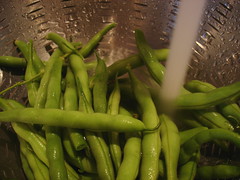
Grilled New Potato Salad with Cherry Tomatoes, Summer Beans, and Basil
2 lbs new potatoes
Light olive oil
Salt and freshly ground black pepper
1/4 pound fresh green beans
1/2 pint cherry tomatoes, preferably Sweet 100s
1 handful salad greens
Basil-Garlic Vinaigrette
Champagne vinegar
12 Niçoise or Gaeta olives
Preheat the oven to 400º F. Toss the potatoes in a baking dish or casserole with a little olive oil and sprinkles with a few pinches of salt and pepper. Cover and roast until tender, 35-40 minutes. Set the potatoes aside to cool. Cut the potatoes into halves, or quarters if large, then place them on skewers or in a grilling basket.
While the potatoes are roasting, remove the stem ends from the beans and cut them in half diagonally if they’re large. Bring a small pot of water to a boil and add 1/2 tsp of salt. Drop the beans into the water and cook until just tender, about 3 to 4 minutes, depending on the size of the beans. Be careful not to overcook. Beans should be crisp-tender. Rinse under cold water and set the aside to drain. Cut the cherry tomatoes into halves or leave whole if small. Wash the salad greens and dry them in a spinner or a clean towel. Make the vinaigrette.
Place the potatoes on the grill, cut side down, and grill until they’re golden and crisp and they’ve developed defined grill marks. Remove the potatoes from the grill, let them cool for a minute or two then toss them with the beans, cherry tomatoes, and vinaigrette. Adjust the seasoning, if need be, with a splash of Champagne vinegar and/or some additional salt and pepper. Loosely arrange the greens on a platter, spoon the vegetables over the greens, then decorate with the olives.
Serves 8 as a side salad.
Basil-Garlic Vinaigrette
2 tbsp Champagne vinegar
6 tbsp extra virgin olive oil
1/2 cup fresh basil leaves
1/2 tsp salt
1 garlic clove, coarsely chopped
Combine all the ingredients in a blender. Blend until smooth.
Make about 1/2 cup.
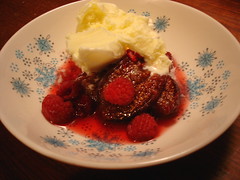
Baked Figs with Raspberries
10 medium-size figs, roughly 1 1/2 pounds
1/4 cup water
1/4 cup sweet wine, such as Beaumes-de-Venise, vin santo, or Sauternes (we used a Maculan 2005 Dindarello Moscato to spectacular effect)
1/3 cup honey, warmed
1 1/2 tbsp sugar
1/2 pint raspberries
Preheat the oven to 425º F. Remove the stem ends of the figs and cut each fig in half. In an earthenware baking dish, place the halves skin-side down, lining them up so they fit evenly. Pour 1/4 cup of water and the sweet wine into the bottom of the dish. Drizzle the figs with the warm honey. Sprinkle the sugar over the figs, making sure each fig gets a tiny bit of sugar.
Bake the figs in the upper part of the oven for 15 minutes. Baste with the water and wine mixture and bake for another 5 minutes. When the figs are starting to caramelize at the edges, add the raspberries, tucking them into the spaces between the figs. Save any extra berries for a garnish. Bake for another 5 minutes just to warm the raspberries through. Serve the figs warm with vanilla or honey ice cream.
Serves 4 to 6, sometimes even 8.
Note: the original recipe called for the figs to be “wood oven-baked.” I’m sure a wood oven would make this dessert even more impressive, but it’s still pretty striking baked in a conventional oven.
Vanilla Ice Cream
12 egg yolks
2 1/2 cups half & half
1 vanilla bean, preferably Tahitian or Madagascar, split lengthwise
1 1/2 cups sugar
4 1/2 cups cold heavy cream
Whisk the egg yolks lightly in a large bowl. Pour the half & half into a large heavy-bottomed saucepan. Scrape the seeds from the vanilla bean into the half & half, add the bean and the sugar, and warm over medium heat, being very careful not to allow the mixture to come a boil. When the sugar is dissolved and the half & half is giving off wisps of steam, slowly whisk the liquid into the yolks.
Return this custard to the saucepan and cook over low heat, stirring constantly, until the mixture thickens slightly and reaches a temperature of about 170º F. Immediately remove from the heat and strain through a fine-mesh sieve. Whisk in the cold cream, then cover and chill thoroughly.
Freeze the mixture in an ice cream machine and churn following the manufacturer’s instructions. Transfer to a container and store in your freezer for several hours or overnight.
Makes 2 quarts.
How's that for a flurry of recipes? Hope you like them as much as we did.
[Grilled New Potato Salad with Cherry Tomatoes, Summer Beans, and Basil and Basil-Garlic Vinaigrette recipes from Fields of Greens by Annie Somerville, all other recipes from the Chez Panisse Café Cookbook by Alice Waters.]
aj
note: For more information on S.C.C. franchise opportunities contact our Franchising Department. 514-284-0811, ask for "Boris."
